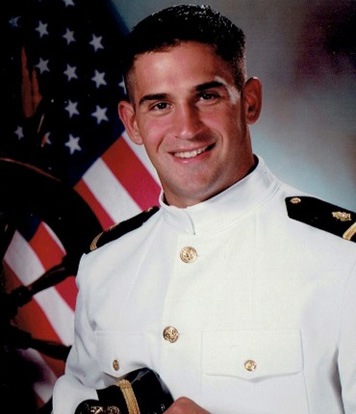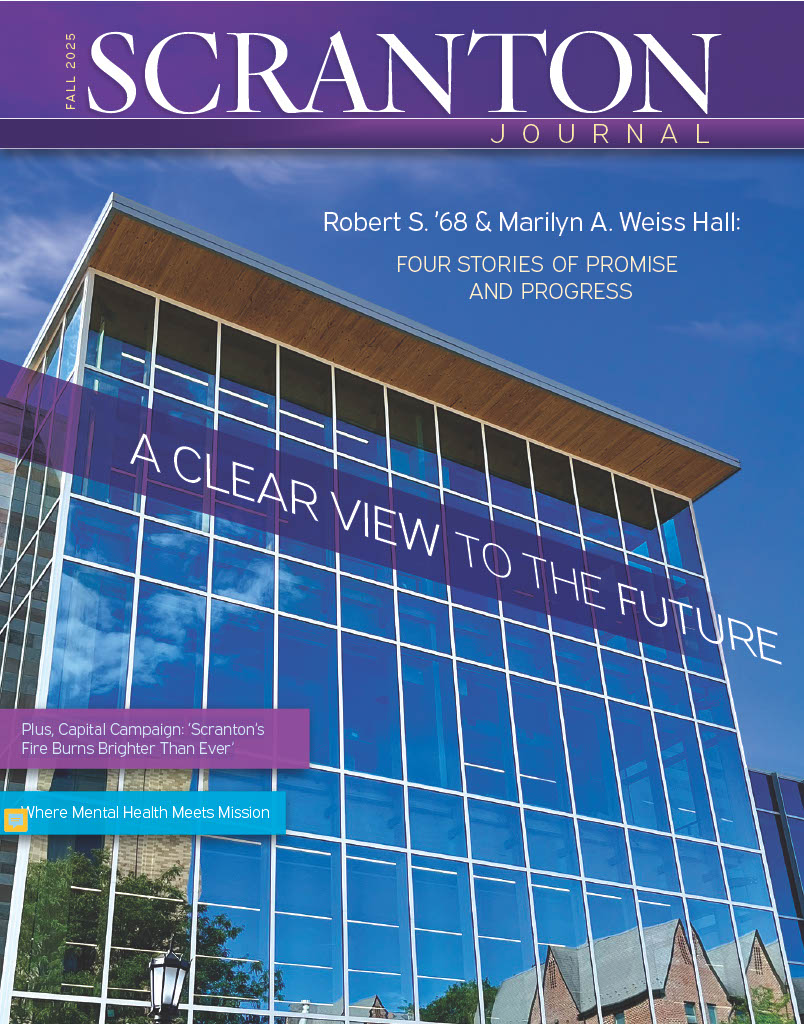An active war zone may not seem like the time for medics and surgeons to reinvent the wheel. But trauma often calls for quick thinking, for decisiveness, for innovation.
While serving in Iraq and Afghanistan, Donald Jenkins, M.D. ’84 helped to revolutionize an important corner of modern medicine through what he called “rediscoveries.” Years later, Daniel Grabo, M.D. ’98 followed the lead of one of his mentors in Afghanistan, employing Jenkins’ rediscoveries to save countless lives.
Jenkins and Grabo both grew up in Luzerne County, a region that, Grabo noted, regularly breeds people who place utmost importance on country, family and faith. It’s the place that helped launch both surgeons down military paths, and it was their Scranton education, they agreed, that helped lay the groundwork for the doctors they would become.
Meet the Mentor
At Scranton, Jenkins, a biochemistry major, learned “philosophy and religion in the hallways,” he said. He also found a mentor in chemistry professor Marty Appleton, a World War II veteran, who suggested that Jenkins consider military medical school. Jenkins did just that, going on to Uniformed Services University of the Health Sciences in Maryland.
In 1988, Jenkins went to San Antonio, Texas, for surgical training and joined the faculty of the Air Force’s Trauma Center in 1998. Soon after 9/11, he was deployed to Oman and was the first surgeon on the Arabian Peninsula, where he set up the first surgical hospital. Later, he served in Iraq as chief surgeon for the Air Force Theater Hospital before moving on to Afghanistan. After spending time in Rochester, Minnesota, as the director of the Level 1 Trauma Center, he returned to the Lone Star State to help lead the Military Health Institute at the University of Texas Health Science Center at San Antonio.
This trajectory married a traditional medical past to a “mind-blowing” future and left Jenkins with one overarching thought: “We better have learned something from this war.”
Thankfully, he said, the medical establishment did.
An early revelation in Jenkins’ career came in Oman, while he was treating severely injured soldiers in need of blood transfusions. Such patients ordinarily would receive component therapy, which is processed donor blood, made up of plasma, platelet and red-blood-cell parts.
“But when I’m on a desert island in Oman,” he explained, “I have a fridge with 30 bags of only red blood cells. The only other blood products are walking around wearing uniforms with blood pumping through their veins.”
And platelets, the key blood circulating cells that clot to stop bleeding, were badly needed. “The only way we could get platelets was to draw them from a donor on the spot,” he said.
It was a reactionary method born of necessity, but it delivered shocking results. Trauma victims given two units of whole blood, as opposed to the typical 12 of processed blood, gained their health back more quickly. Casualties were dramatically reduced.
Thus, a team of medical pioneers who looked to the past for answers was born. To Jenkins, whole blood transfusions made sense, but component therapy began in the 1970s and became standard practice by 1990, when he was training, so he had no experience with it. Nonetheless, he and his team began to use whole blood. It worked.
And they could hardly wait to take their findings home.
“It was almost magical,” said Jenkins. “We rekindled this eight-track tape and played some really good music on it.”
“Old-school” teachers would need no convincing, he said; contemporary skeptics, however, were a different story. Jenkins remembered being grilled during scientific trauma meetings. “They didn’t want to believe there was a better way to do things,” he said.
Jenkins and his crew have recorded many positive outcomes using another new-old treatment: tourniquets.
“In Vietnam,” Jenkins said, “More than 7,000 of our fellow citizens bled to death in what could have been stopped by a tourniquet.”
A 90 percent post-hemorrhage death rate has become a 90 percent survival rate, he said, which means that more medical leaders are taking the long view.
Count fellow alumnus Grabo among them.
Meet the Mentee
A trauma surgeon at the Los Angeles County Navy Trauma Training Center, who also spent 10 months as chief of trauma in Kandahar, Afghanistan, Grabo was (and is) a big believer in Dr. Jenkins’ work. Thanks to him, said Grabo, he and other, newer military surgeons were “already using tourniquets, already using whole blood.”
Jenkins laid the groundwork, and Grabo proudly carries the torch.
Grabo hears the echoes of cura personalis, which he learned when he was a biology major at Scranton.
“I feel very strongly called to making sure all the hard work Dr. Jenkins did does not get lost,” he said. “After Vietnam, they learned a great deal about how to take care of combat casualties. Yet, these lessons learned were put on a shelf, and when we went back to war, our warriors were dying at too high a rate from preventable causes. Dr. Jenkins and his team had to rediscover all of these lessons, as well as a few more. It’s my job to make sure that we continue to talk about what they learned, to teach it and to refine it.”
It’s a heady mission for the father of two young sons, and husband of fellow 1998 alumna Janet Ramos. “Ten to 20 years from now, when our children go off to fight the next ‘great war,’ we hope there won’t be mass casualties,” he said.
Grabo has implemented Jenkins’ work to great success — at home and overseas — often through an evolving concept called damage-control surgery. Its time-saving elements relate to a military system that Jenkins established.
In Iraq, Jenkins helped set up a coordinated — and boundary-breaking — trauma system among the Army, Navy and Air Force. Under the old order, a Marine medic would never take an injured Marine to an Army hospital because home base was king, even if it meant “patients were going 90 miles in the wrong direction to get health care that was 20 miles in the other direction,” Jenkins said.
Time management was equally critical for Grabo, who directed efforts to save the lives of Romanian security soldiers injured by an improvised explosive device in Afghanistan in 2014.He received the Romanian Medal of Honor for his heroism. He used every “new-old” tool from Jenkins’ kit, including massive transfusions and tourniquets.
Now, patients are sent to the nearest hospital that has the capabilities to care for their injury. Eliminating blind party loyalty has saved many lives.
He continues to use those tools to train doctors in California and sees the difference tourniquets, for one thing, make on trauma patients from the streets of Los Angeles. In such situations, Grabo hears the echoes of cura personalis, which he learned when he was a biology major at Scranton. Treating friends and foes alike, out of respect for the individual person, may not be easy, but it’s a “no-matter-what” requirement, as important on the battlefields as in civilian life.
Caring for drunk drivers, gang members and the like at home can be as difficult as caring for military enemies. “That’s where caring for the whole person comes into play,” said Grabo.
The life-saving tourniquet makes no judgments, and neither does he.
As for those tourniquets? “Jenkins was one of the major leaders on that front,” he said. “I am honored to know him and to look to him as a mentor and a leader.”
Other believers in Jenkins are rapidly multiplying (he recently received the American Legion’s highest honor for his work), especially when it comes to using fresh, whole blood for transfusions.
“They’ve dusted off the old manuals, they know the science and they see that this clearly is the way to go,” said Jenkins. “This is the plan for the next decade.”
Disclosure from the Department of the Navy/the Department of Defense (D.O.D.): The views presented here are those of the author and not necessarily the Navy or D.O.D.






